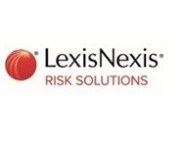Getting up to speed with advances in Advanced Driver Assistance Systems

Authored by Andrew Ballard, product principal, LexisNexis Risk Solutions
The capabilities of Advanced Driver Assistance Systems (ADAS) are evolving fast, as safety features become an important factor in car choice. As a result, the global ADAS market size is projected to grow from £20.30 billion in 2021 to £55.91 billion by 2030, at a CAGR of 11.9%. This is increasing the pressure on insurance providers to get better acquainted with ADAS and keep pace with safety technology as it continues to evolve.
Features such as blind spot detection, rear cross traffic, lane keep assist, forward collision warning, and automatic emergency braking are becoming standard fitments on many new vehicles. Already, ADAS is commonplace in vehicles in the U.K. In fact, our team data scientists at LexisNexis Risk Solutions found that on average, there are eight safety features per vehicle in the car parc, making the U.K among the leaders in the adoption of automated vehicle safety systems across Europe.
As technology develops, ADAS feature availability and fitment is expected to increase but it will also become more challenging and complex for insurance providers to assess risk for the different types of vehicle technology now emerging. With many new developments, advanced technologies such as sensors or cameras within door mirrors and bumpers are high in consumer demand, and they’re becoming a larger part of the total component cost and the total at-risk element for insurance purposes.
ADAS feature groupings and vehicle sensors are increasingly becoming interconnected and inter-related, in a process referred to as sensor fusion. As an example, we have seen demonstrations of ADAS that are able to determine when the driver seems incapacitated - perhaps they have fallen asleep at the wheel or had a heart attack - sensor fusion enables joint readings to be taken from Driver Monitoring; Forward Collision; Adaptive Cruise and Lane Assistance. Combined, the systems notice that the driver is not attentive. Added to this, the driver is not managing the vehicle speed and direction because those systems keep having to activate. When this overall conclusion is reached, the car will safely move to the side of the road, park and apply the hazard warning lamps. It can also call emergency services to seek assistance.
Lane Assist capabilities are advancing at a pace - the mapping company HERE is working with car manufacturers on lane assist to take account of the actual road layout the vehicle is on and approaching. This would allow for more predictive and actuate positioning of the vehicle – taking account of road layout, bends and contours.
The definition of what constitutes ADAS is also evolving. Indeed, a UK Government consultation on the safe use of Automated Lane Keeping Systems (ALKS) found that most respondents believe ALKS should be treated as a form of ADAS.
There is little doubt that understanding ADAS fitment and performance at the VIN level is becoming business critical for motor insurance providers. It’s not just about understanding how the vehicle is equipped as it came off the producion line, it’s knowing about any optional features chosen at purchase; it’s being aware of when remote feature deployment and over-the-air updates occur; and ultimately identifying when ADAS features are activated or deactivated.
ADAS has been a blind spot for the insurance market for too long but with the emergence of solutions such as LexisNexis® Vehicle Build, motor insurance providers can now factor for the presence and performance of ADAS at the VIN level, at the point of quote.
Just like ADAS, LexisNexis® Vehicle Build won’t stand still – it must keep pace with the advances in ADAS technology to deliver the clearest picture of how a specific vehicle is equipped and which ADAS functions are activated, at any point in time.
Knowing that 69% over 3 million cars analysed in Europe are equipped with a “core” safety feature and are therefore less likely to have an at fault insurance claim, it’s clear that the insurance market’s ADAS blind spot had to be solved. This is not just about pricing, ADAS insights also offer insurance providers an opportunity to educate used car buyers on how their vehicle is equipped, when providing a quote. This has become all the more pertinent given the performance of the used car market over the past year with sales up 16% on 2020.
The analysis we have conducted across Europe is all part of our significant investment in building data relationships with vehicle manufacturers to help insurance prepare for the future of vehicle automation.
Those insurance providers who are starting to use ADAS data will be at a distinct advantage as competitive pricing and better customer experiences demand a deeper understanding of the vehicle in addition to the driver and as ADAS continues to evolve to make driving safer.
About LexisNexis
At LexisNexis Risk Solutions, we believe in the power of data and advanced analytics for better risk management.
With over 40 years of expertise, we are the trusted data analytics provider for organisations seeking actionable insights to manage risks and improve results while upholding the highest standards for security and privacy.
We enable insurers and brokers to improve decision-making, increase profitability and transform business performance with actionable insights from our data and analytics solutions. For more information, please contact risk.lexisnexis.co.uk/insurance or enquiries-info@lexisnexis.co.uk.

